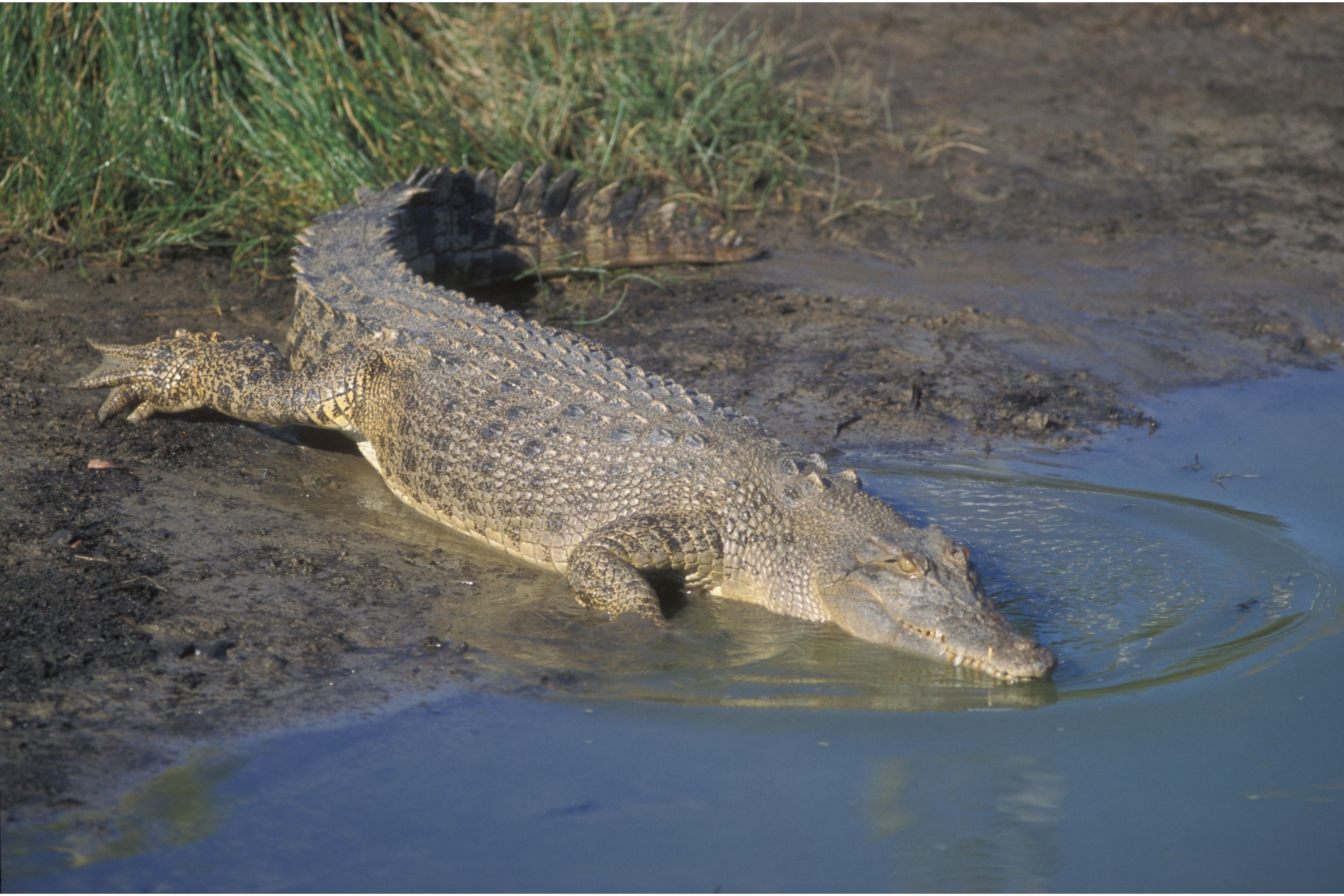Saltwater crocodile
(Crocodylus porosus)

Description
The saltwater crocodile (Crocodylus porosus) is a crocodilian native to saltwater habitats and brackish wetlands from India's east coast across Southeast Asia and the Sundaic region to northern Australia and Micronesia. It has been listed as Least Concern on the IUCN Red List since 1996. It was hunted for its skin throughout its range up to the 1970s, and is threatened by illegal killing and habitat loss. It is regarded as dangerous to humans. The saltwater crocodile is the largest living reptile and crocodilian known. Males grow to a length of up to 6 m (20 ft), rarely exceeding 6.3 m (21 ft) or a weight of 1,000–1,300 kg (2,200–2,900 lb). Females are much smaller and rarely surpass 3 m (10 ft). It is also known as the estuarine crocodile, Indo-Pacific crocodile, marine crocodile, sea crocodile or informally as saltie. The saltwater crocodile is a large and opportunistic hypercarnivorous apex predator. It ambushes most of its prey and then drowns or swallows it whole. It is capable of prevailing over almost any animal that enters its territory, including other apex predators such as sharks, varieties of freshwater and saltwater fish including pelagic species, invertebrates such as crustaceans, various amphibians, reptiles, birds, and mammals, including humans. The saltwater crocodile has a wide snout compared to most crocodiles. However, it has a longer snout than the mugger crocodile (C. palustris); its length is twice its width at the base. A pair of ridges runs from the eyes along the centre of the snout. The scales are oval in shape and the scutes are either small compared to other species or commonly are entirely absent. In addition, an obvious gap is also present between the cervical and dorsal shields, and small, triangular scutes are present between the posterior edges of the large, transversely arranged scutes in the dorsal shield. The relative lack of scutes is considered an asset useful to distinguish saltwater crocodiles in captivity or in illicit leather trading, as well as in the few areas in the field where sub-adult or younger saltwater crocodiles may need to be distinguished from other crocodiles. It has fewer armour plates on its neck than other crocodilians. The adult saltwater crocodile's broad body contrasts with that of most other lean crocodiles, leading to early unverified assumptions the reptile was an alligator.
Taxonomic tree:







